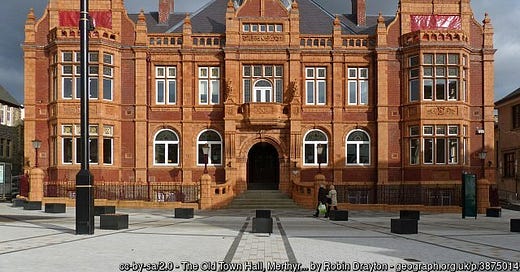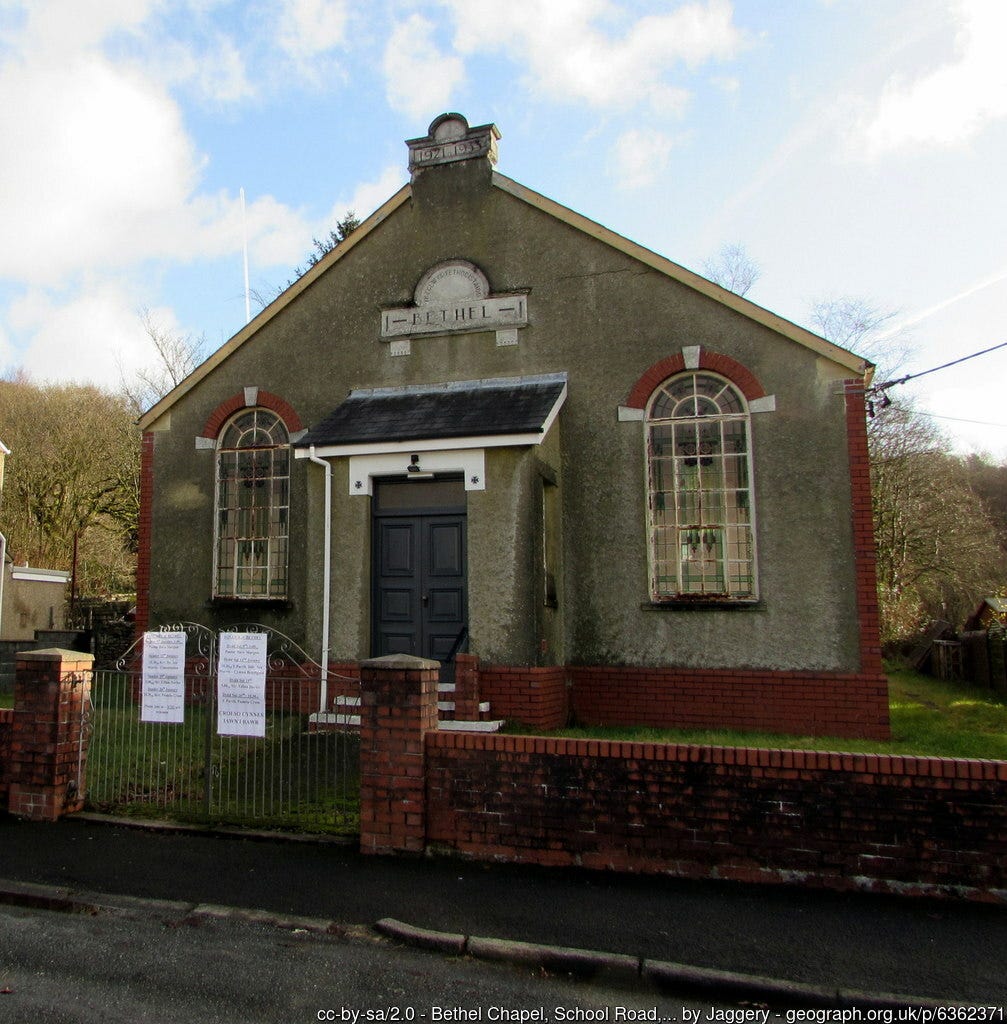Corners of Britain #2: The South Wales Valleys
The second in my series profiling unusual or under-reported parts of the country
Note: This is the second of a series called Corners of Britain, in which I will profile unusual or under-reported parts of the country using Census 2021 data. Get the data for your area or build your own custom area.1
Previously in this series:
Welcome to the South Wales Valleys
The story of the South Wales Valleys, often simply called the Valleys, is intimately linked to coal and iron. Before the Industrial Revolution only a few farmers inhabited this part of Wales. The steep, narrow valleys weren’t suitable for anything apart grazing sheep and cattle.
But beneath the ground lay huge deposits of valuable coal and iron ore. Ironworks and collieries needed men to extract and work with these raw materials and so the population of the Valleys exploded.
The population of Merthyr Tydfil shot up from 7,705 in 1801 to 46,378 in 1851, an incredible sixfold increase in just 50 years. That year it was the largest town in Wales.
The coal mining industry reached its peak just before the First World War. Between 1881 and 1911 the population of the Rhondda urban district went from 88,351 to 152,781 - another massive increase of 72.9 per cent.
In 2021 the population of the South Wales Valley was approximately 801,200 people, or about 26 per cent of Wales.
A distinctly Welsh identity…
The South Wales Valleys have a strong Welsh national identity.
In Maesteg East, Bridgend, 76.8 per cent of the population say they are Welsh - not British, English or anything else. This is the second highest proportion of any neighbourhood in Wales.
Nine of the top ten neighbourhoods with the highest Welsh identity are in the Valleys. As you can see from the map above, that dark red section in south Wales tallies neatly with an outline of the Valleys.
…but relatively few Welsh speakers
This strong Welsh identity doesn’t translate to speaking Welsh.
Only 11.4 per cent of the Valleys can speak Welsh, compared to 17.8 per cent of the country overall.
The heartlands of Welsh speakers in Wales are in the north and west of the country. In parts of Anglesey and Gwynedd more than 70 per cent of the population can speak Welsh.
In the Valleys Ystalyfera & Gwaun-Cae-Gurwen on the northwestern edge was the region’s most Welsh-speaking area, with 41.3 per cent of its residents saying they could speak the language.
Collapse of coal mining
In 1911 an incredible 874,304 men worked in coal mining in England and Wales. Some of the densest proportions of men working in this hazardous industry were to be found in the South Wales Valleys.
The collapse of the coal mining industry in Britain is a long story, but by 2011 only 1,150 people in Wales said they mined coal for a living. At the latest Census that figure had halved again, with only 475 people working in the industry across Wales.
The Valleys have a higher share of people working in ‘caring, leisure and other service occupations’, ‘process, plant and machine operatives’ and ‘elementary occupations’ than Wales as a whole.
Increasingly irreligious
The Valleys used to be a stronghold of non-conformist Christianity. Driving through the region you will see austere Methodist chapels in many towns and villages like the one below in Crynant.
But now only 38.3 per cent of people in the Valleys describe themselves as Christian - a smaller proportion than the 43.6 per cent who said so across Wales.
Other religions haven’t taken root in the Valleys. Less than 1 per cent of the region describe themselves as Buddhist, Hindu, Jewish, Muslim or Sikh.
Instead the region has some of the highest proportions of people who told the Census they had no religion in 2021. The top 25 neighbourhoods with the highest proportions of no religion were all in the Valleys.
In total 54.5 per cent of the Valleys said they had no religion, higher than the Welsh figure of 46.5 per cent.
Conclusion
Statistics are not always good at capturing culture. The Valleys certainly has a distinctive culture that is often associated as quintessentially Welsh such as rugby, male voice choirs and the trade union movement.
In terms of the headline figures, the employment profile in the Valleys is about the same as the rest of Wales. A similar number of people are in work and out of the labour market. However the quality of these jobs has often been highlighted as less secure and less well paid in the Valleys.
At the last Census 31.0 per cent of people aged 16 and over in the Valleys had jobs described as routine or semi-routine, compared to 26.3 per cent across Wales. These are often less-secure, lower-paid jobs.
An area’s culture and its economy are always closely linked. The coal and steel industries drove the large-scale settlement of the Valleys. A replacement, or replacements, for that heavy industry has proven very difficult to find.
I work on Census 2021 at the Office for National Statistics









